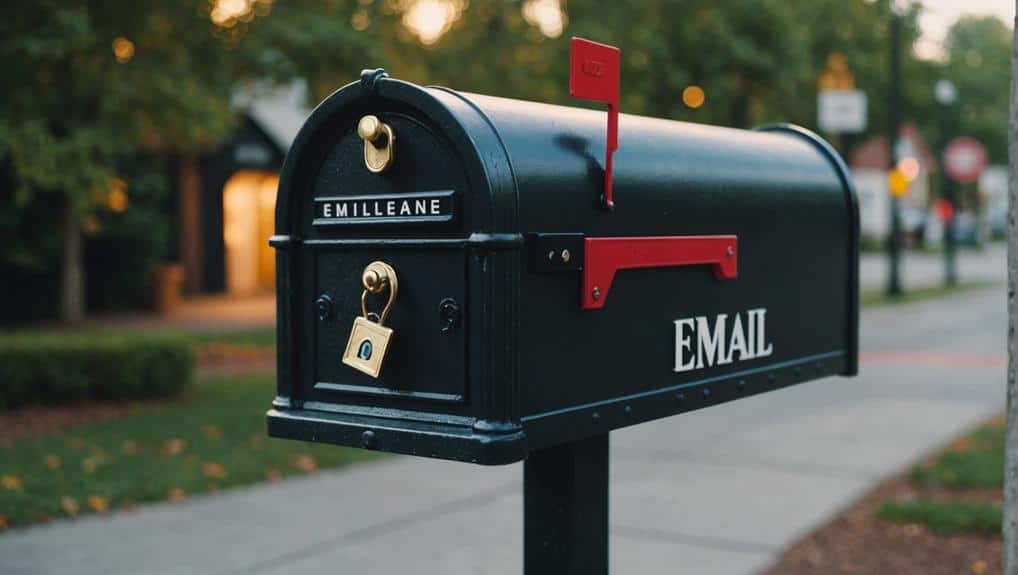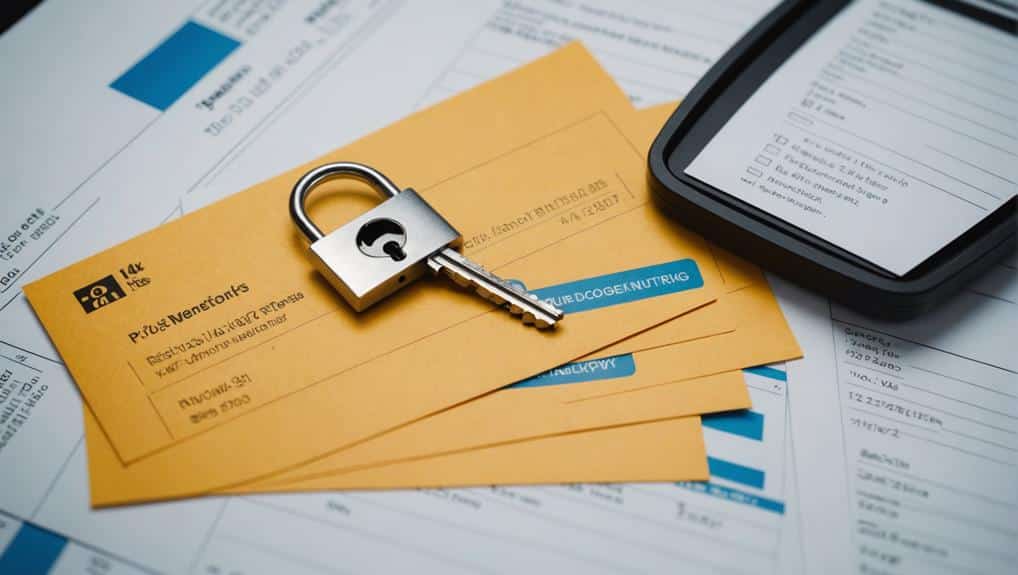In today’s competitive business landscape, mastering the art of cold email marketing is an essential skill that can significantly enhance your reach and conversion rates. This discussion will delve into eight powerful strategies for effective cold email marketing, from tailoring your approach and creating concise, impactful content to understanding your target audience and ensuring legal compliance. Each of these aspects represents a vital piece in the puzzle that, when accomplished, opens the gateway to marketing success. If you’re seeking to refine your email marketing strategies and achieve more significant results, this is a conversation you won’t want to miss.
Key Takeaways
- Personalize email subject lines and content to boost open rates and engagement.
- Keep the email content concise, clear, and considerate to enhance response rates.
- Include a clear and compelling call-to-action to guide recipients towards desired actions.
- Identify and understand the proper recipients for effective cold email outreach.
Understanding Cold Email Marketing
In digital marketing, cold email marketing is a potent strategy for initiating first-time contact with potential leads or customers. It serves diverse purposes, such as sales enhancement, recruitment, business expansion, and networking. The modus operandi of cold email marketing is starkly different from traditional email marketing, as it targets individuals who have not previously engaged with the sender’s brand.
Successful cold emails are not just about reaching out but also about compliance. The CAN-SPAM Act and other global regulations like GDPR delineate the legal boundaries for sending unsolicited emails. Legal compliance is, therefore, not merely an option but a necessity, ensuring that your outreach does not deviate into the domain of spam.
Moreover, understanding the target audience is an integral part of this process. A deep, insightful understanding of your audience allows for personalized messaging, leading to higher engagement. Finally, clear calls-to-action are pivotal in steering the audience toward desired outcomes, making cold email marketing an effective tool for achieving various business objectives.
Importance of Personalized Emails

Harnessing the power of tailored emails is a strategic move in cold email marketing, as it dramatically impacts individual engagement and conversion rates. Tailored emails are a proven mechanism to enhance customer engagement, with 74% of marketers acknowledging their effectiveness. They offer a distinct, targeted customization that appeals to the individual, making them feel recognized and, consequently, more likely to engage.
The importance of tailored emails also lies in their significantly higher transaction rates. Offering a tailored experience increases the likelihood of consumer purchases by 56%. This customization creates a sense of belonging and connection between the customer and the brand, fostering loyalty and repeated patronage.
Furthermore, tailored subject lines are a critical factor in boosting open rates. Emails with a personalized touch in their subject lines are 26% more likely to be opened. Conversely, a failure to customize drastically decreases open and click-through rates by 93% and 94%, respectively. Therefore, tailored emails are not merely an optional tactic but a strategic strategy for ineffective cold email marketing.
Crafting Effective Cold Emails

Crafting effective cold emails is a strategic process that involves several key elements. Start with a tailored subject line to increase open rates, followed by concise, clear messaging with a unique value proposition. The essential conclusion to your cold email is a compelling call to action that guides the recipient on the next steps.
Personalized Subject Lines
Crafting tailored subject lines can enhance email open rates by a staggering 26%, proving the immense significance of customization in cold email marketing. Customized subject lines that use the recipient’s name can further boost these open rates by an additional 20%—proof of the power of individual recognition and the sense of belonging it fosters.
Moreover, subject lines incorporating specific details related to the recipient’s interests or needs show higher engagement. This strategic, detail-oriented approach demonstrates understanding and respect for the recipient, fostering a persuasive connection.
A/B testing is a valuable tool in this process. It aids in determining the most compelling subject lines by allowing comparison of different variations. This guarantees the best possible engagement rates, optimizing your marketing efforts.
Lastly, sparking curiosity in the subject line can significantly increase email engagement. Addressing a pain point or question immediately engages the reader, pulling them into the content of the email.
| Strategy | Impact on Open Rates |
|---|---|
| Customization | 26% increase |
| Use of Name | 20% increase |
| A/B Testing | Varies, but improves |
Harness the power of customized subject lines to ensure your email marketing success.
Concise Email Content
The power of brevity in cold email marketing cannot be overstated. Data shows that concise, to-the-point email content can boost response rates by an impressive 73%. Keeping your email content within an ideal range of 50-125 words can significantly enhance engagement, as it respects the recipient’s time and attention span.
Shorter emails are more likely to be read; hence, they enjoy a 50% higher response rate than lengthy, overwhelming ones. Remember, your audience is busy and receives numerous emails daily. By keeping your content concise and clear, you increase the chances of your email being opened and read and improve your conversion rates by 40%.
Your business thrives on conversions, and email marketing plays a pivotal role. Concise email content is critical, with a click-through rate 65% higher than lengthy emails. It’s about delivering value in fewer words. Your audience will appreciate the respect for their time and respond favorably, pushing your email marketing success to new heights. Brevity, clarity, and consideration for the recipient’s time are at the heart of every successful email marketing campaign.
Clear Call-to-Action
A distinct call-to-action (CTA) elevates response rates by up to 371%, which is essential to an effective cold email structure. This CTA is your key to accessing recipients’ engagement, using actionable language to prompt the desired action.
The proper CTA does not just increase response rates; it ushers recipients toward the next steps in their journey with your brand. It’s a guidepost, shining a light on the path that leads deeper into the opportunities your business offers. Effective CTAs communicate clearly what you want the recipient to do after reading your email, leaving no room for ambiguity.
To optimize your CTA’s impact, it must be prominently placed and easy to locate and act upon. Hide it, and you risk losing the opportunity to engage. The CTA should be an unmissable beacon, directing recipients toward a meaningful interaction with your brand.
A clear CTA isn’t just a demand—it’s an invitation to belong, to be a part of your brand’s story. Craft it with care, and watch your cold email marketing success soar.
Finding the Right Recipients

Exploring the vast digital terrain to pinpoint the proper recipients can significantly enhance the success of your cold email marketing campaigns. The key is identifying your ideal customer profile and locating their email addresses. Professional networking platforms like LinkedIn can be instrumental in this process, offering valuable insight into prospects and enabling effective outreach.
Targeting your prospects based on their professional profiles increases the relevance of your cold emails, subsequently driving high response rates. In this situation, researching prospects is not just a suggestion but an integral part of a successful cold email strategy. It’s about understanding their needs, interests, challenges, and aspirations and tailoring your emails to resonate with them.
Achieving this requires a strategic, detail-oriented approach. It’s about more than just finding an email address; it’s about understanding who you’re emailing. By doing so, your cold emails become less about pitching your business and more about offering solutions to your prospects’ needs. This is the secret to unleashing the true potential of cold email marketing. Remember, success lies in the details, and finding the correct recipients is something you can’t overlook.
Building Relationships Through Follow-ups

The role of follow-ups in cold email marketing is critical to fostering robust relationships and bolstering response rates. To maximize effectiveness, these follow-up messages should be tailored to each recipient, addressing their needs and concerns. This strategy and valuable insights show that it significantly increases conversion rates and facilitates long-term business growth.
Persistence in Email Follow-ups
While it may seem laborious, persistence in sending follow-up emails has proven essential in nurturing client relationships and achieving a higher response rate, as underscored by numerous studies. The commitment shown through follow-up emails demonstrates a company’s dedication to its clients, fostering a sense of belonging and establishing a firm foundation for a long-lasting relationship.
Consider these key strategies:
- Sending around five follow-up emails increases the chances of getting a response, with effectiveness reducing after the third email. This persistence boosts engagement and keeps your message at the forefront of prospects’ minds.
- Personalized follow-up emails are also vital in improving response rates. They indicate a sincere interest in the recipient and can boost reply rates by up to 30%.
Crafting Effective Follow-up Messages
In cold email marketing, crafting effective follow-up messages is an essential strategy that can boost response rates by up to 65 percent and play an important role in building strong client relationships. The power of follow-up emails lies in their ability to sustain dialogue, foster rapport, and gradually nurture leads into conversions.
Personalization and relevance are vital in crafting these emails. Customizing your messages to the recipient’s needs and context can enhance their engagement, driving a 10-25 percent higher response rate. To add value, your follow-ups should address any concerns or objections the recipient might have. This shows your attention to their needs and enhances their sense of belonging.
Timing is critical. Research shows that responding within 24 hours significantly increases the likelihood of a positive response. Thus, a well-structured follow-up sequence, incorporating multiple touchpoints and varied messaging, is a compelling strategy.
Value-Driven Relationship Building
Harnessing the power of follow-up emails, businesses can drive a significant increase in response rates, up to 65%, thereby paving the way for deeper, more valuable relationships with potential clients or supporters. Through these follow-ups, we can establish value-driven relationship building, essential for client retention and conversion.
The core strategies include:
- Value Proposition: Communicate your distinctive selling point effectively. Show the recipient how they will benefit from your product or service, addressing their needs or pain points. This not only builds trust but also strengthens your relationship with them.
- Tailored Messages and Personalized Follow-ups: Crafting personalized follow-up messages increases response rates by 10-25%. By referencing previous interactions, you demonstrate your attentiveness and dedication to meeting their needs.
Legal Requirements for Cold Emailing

Adhere to the legal requirements for cold emailing to safeguard your business’s reputation and avoid hefty fines. Compliance regulations such as the General Data Protection Regulation (GDPR) and the Controlling the Assault of Unsolicited Pornography and Marketing (CAN-SPAM) Act govern these email laws. Central to these laws is the need for recipient consent and the provision of opt-out mechanisms.
The CAN-SPAM Act, for example, requires accurate sender information and allows recipients to cease receiving future emails. Noncompliance can result in penalties, including fines and reputational damage. Respecting recipients’ privacy and time is critical to staying within legal boundaries during cold email outreach.
Consider the following table for a quick overview of these critical laws:
| Regulation | Key Requirements |
|---|---|
| GDPR | Obtaining explicit and affirmative consent from recipients |
| CAN-SPAM Act | Providing accurate sender information and easy opt-out mechanisms |
A/B Testing Strategies for Email Outreach

When considering A/B testing strategies, it’s essential to recognize their potential for optimizing email outreach efforts. By comparing two versions of an email and discerning which one yields higher open rates, click-through rates, and conversions, A/B testing offers valuable insights into the effectiveness of your email copy and overall campaign. It fosters a sense of belonging among your audience as they receive content that resonates with them.
In the domain of A/B testing, consider these key points:
- A/B testing allows for directly comparing different email elements, from subject lines to calls-to-action, revealing what engages your audience.
- Analyzing the results lets you optimize your email campaigns, improving engagement and driving more conversions.
In essence, A/B testing is a powerful tool that enables you to tailor your email campaigns to your audience’s preferences. By leveraging these strategies, you can increase open rates, click-through rates, and conversions, propelling your business toward success.
Optimizing Email Campaigns for Success

In high-stakes digital marketing, optimizing email campaigns is necessary for exponential growth and success. Cold email campaigns offer a rare chance to reach potential clients and engage them with your brand directly. Several key factors must be considered to unleash this strategy’s full potential.
First and foremost, tailoring your emails’ subject lines and content can significantly enhance open and click-through rates. This personalization makes the recipient feel valued and acknowledged, nurturing a sense of belonging, which is crucial for cultivating customer relationships. Moreover, integrating a clear and compelling call to action within your email is essential. This decisive prompt prompts the recipient to engage further with your brand.
Furthermore, segmenting your email campaigns based on specific client characteristics can result in a staggering 760% increase in revenue. This targeted approach ensures that your content resonates more deeply with its intended audience, boosting its effectiveness. Lastly, using A/B testing to refine your strategies can significantly optimize your campaigns, leading to tremendous success in your digital marketing efforts.
Frequently Asked Questions
Is Cold Email Illegal?
Cold emailing is not illegal, but laws like GDPR and the CAN-SPAM Act regulate it. Compliance with these regulations, including obtaining recipient consent and providing accurate sender info, is essential to avoid penalties.
What Is the Best Cold Email Strategy in 2024?
The best cold email strategy for 2024 includes tailoring content, keeping messages concise, ideal timing for sending, rigorous A/B testing of subject lines, and prompt follow-up within 24 hours to increase engagement and responses.
What Are the Tips and Essentials of Effective Cold Email?
Effective cold emailing requires tailored subject lines, clear calls to action, custom messages, and concise content. Additionally, quickly capturing attention is vital, as many open emails are based on the subject line.
What Is the Power of Cold Email?
The power of cold email lies in its ability to break the ice with potential clients, directly reach decision-makers with customized messages, fuel business growth, shorten sales cycles, and foster a sense of belonging.
Conclusion
To sum up, mastering the art of cold email marketing can significantly boost a business’s engagement and conversion rates. A strategic, detail-oriented approach that emphasizes customization, targeted outreach, compelling CTAs, and legal compliance is undeniably essential. Moreover, the importance of A/B testing in optimizing email campaigns cannot be overstated. By utilizing these strategies, businesses stand to achieve unmatched success in their marketing endeavors, creating meaningful connections and generating significant results.


Recent Comments